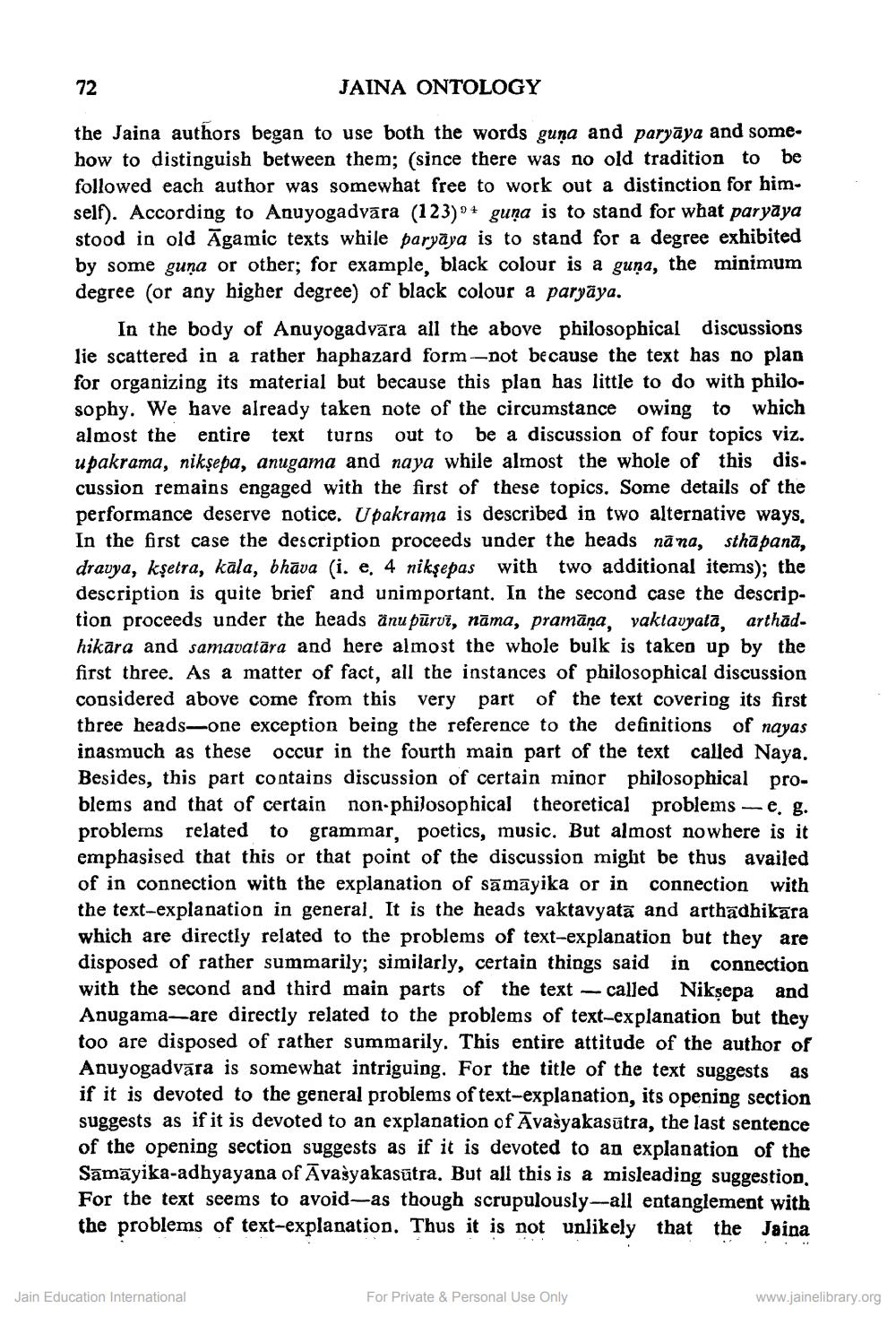________________
JAINA ONTOLOGY
the Jaina authors began to use both the words guna and paryāya and somehow to distinguish between them; (since there was no old tradition to be followed each author was somewhat free to work out a distinction for him. self). According to Anuyogadvāra (123)9 + guna is to stand for what paryaya stood in old Āgamic texts while paryāya is to stand for a degree exhibited by some guna or other; for example, black colour is a guna, the minimum degree (or any higher degree) of black colour a paryāya.
In the body of Anuyogadvāra all the above philosophical discussions lie scattered in a rather haphazard form-not because the text has no plan for organizing its material but because this plan has little to do with philosophy. We have already taken note of the circumstance owing to which almost the entire text turns out to be a discussion of four topics viz. u pakrama, nikşepa, anugama and naya while almost the whole of this discussion remains engaged with the first of these topics. Some details of the performance deserve notice. U pakrama is described in two alternative ways, In the first case the description proceeds under the heads nāna, stha panā, drauya, kşetra, kala, bhāva i. e, 4 nikşepas with two additional items); the description is quite brief and unimportant. In the second case the description proceeds under the heads änu pūrvi, nāma, pramāna, vaktavyata, arthadhikara and samavatāra and here almost the whole bulk is taken up by the first three. As a matter of fact, all the instances of philosophical discussion considered above come from this very part of the text covering its first three heads-one exception being the reference to the definitions of nayas inasmuch as these occur in the fourth main part of the text called Naya. Besides, this part contains discussion of certain minor philosophical problems and that of certain non-philosophical theoretical problems-e. g. problems related to grammar, poetics, music. But almost nowhere is it emphasised that this or that point of the discussion might be thus availed of in connection with the explanation of sāmāyika or in connection with the text-explanation in general. It is the heads vaktavyatā and arthadhikara which are directly related to the problems of text-explanation but they are disposed of rather summarily; similarly, certain things said in connection with the second and third main parts of the text - called Niksepa and Anugama-are directly related to the problems of text-explanation but they too are disposed of rather summarily. This entire attitude of the author of Anuyogadvāra is somewhat intriguing. For the title of the text suggests as if it is devoted to the general problems of text-explanation, its opening section suggests as if it is devoted to an explanation of Avašyakasūtra, the last sentence of the opening section suggests as if it is devoted to an explanation of the Sāmāyika-adhyayana of Āvasyakasūtra. But all this is a misleading suggestion. For the text seems to avoid-as though scrupulously--all entanglement with the problems of text-explanation. Thus it is not unlikely that the Jaina
Jain Education International
For Private & Personal Use Only
www.jainelibrary.org




